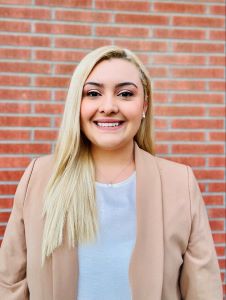How to improve student literacy skills in science
By Wendy Toro, High School Biology/Chemistry Teacher
What does being scientifically literate mean? Being scientifically literate means that a person can ask, find, or determine answers to questions derived from everyday observations and curiosity!
Therefore, they have numerical, written, and literacy skills to describe natural phenomena. Now, if we look at US literacy data, 4 out 5 adults (80%) have sufficient English literacy skills to complete tasks that require comparing and contrasting information, paraphrasing, or making low level inferences [1]. In contrast, 1 in 5 adults (21%) has difficulty completing these tasks. Therefore, 21% of adults are illiterate, translating to 43 million US adults who possess level 1 literacy skills. Both White US born (35%) and Hispanics born outside of the US (34%) make up the largest percentage of adults with low English literacy skills. Furthermore, low literacy levels cost the US $2.2 trillion/year because of the correlation between literacy skills and personal income, employment levels, health, and economic growth [2].
If we look at the literacy skills in the state of California alone, California has the lowest literacy rate of any state in the US [3]. Only 77% of adults are considered mid to highly literate. However, we have to take into consideration that California has the most diverse population in the country with more than 200 spoken languages [3]. In addition, only 10% of students in English acquisition programs display grade-level proficiency [3].
Tips
Why do students need literacy skills in a science class? Students need literacy skills to be able to interpret scientific reading, research, data, graphs, and be able to problem solve. Here are some tips to improve students’ scientific literacy skills, K-12th grade (continue reinforcing especially in 9-12th grades):
1. Read scientific literacy as a class
a. Assign a reading activity 1-2 times a week to allow students to read and familiarize themselves with scientific literacy.
b. Popcorn Read- let students guide the reading, make it fun, and engaging!
c. Scaffold the reading by pausing, breaking down each paragraph, and asking students questions to check for reading comprehension, misconceptions, etc.
d. Annotating by highlighting 1-2 sentences they found important from each paragraph.
e. Go over reading questions as a quick assessment!
2. Choral responses
a. Allows all students to hear new vocabulary terms and repeat after the teacher gives a count-down.
b. Supports all student learners IEP, ELL (equity)
c. Gives students confidence to participate in group discussions and reading activities.
3. Group Discussions
a. Allows students to listen to each other's interpretation of the reading and learn from one another.
b. Students can correct any misconceptions they may have had therefore improving their literacy comprehension skills.
c. You (the teacher) can walk around listening to students’ conversations and ask each group a question for a quick check for understanding.
4. Personalize the reading
a. Relate the content to real life scenarios or news
5. Small incentives
a. Provide participation points or any other small incentive to motivate students to read aloud in class.
Conclusion
Getting students engaged in reading as a class can go a long way! You will support all student learners and improve their scientific literacy skills helping them excel in other areas in the class as well. Please continue to reinforce these small techniques mentioned above which can go a long way for students! By the time students reach high school, teachers can see which students have not had these literacy skills reinforced!
References
[1] US LITERACY
[2] US COST
[3] CA STATS
[4] COMMON CORE LITERACY STANDARDS
About the Author

Wendy Toro is a secondary science educator focused primarily in designing curriculum and laboratory experiments for Biology and Chemistry courses using the UDL framework and NGSS standards. In addition, she is a college mentor for STEM students wishing to become secondary science educators themselves. She holds an A.A. degree in Natural Sciences from Cerritos College, a B.S. degree in General Biology from Cal State Long Beach, a M.S. degree in Educational Technology from Johns Hopkins University, and completed Biotechnology Engineering at UCLA.
Through her experiences in school and at work, she discovered how the art of science is not only about learning scientific concepts and conducting experiments, but science is also about exercising and implementing of such skills such as scientific language, scientific literacy, critical and analytical thinking. It is a subject that is unfixed and continues to advance with the support of technology to give us the skills we need to interpret the world starting in the classroom.






